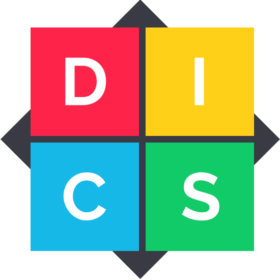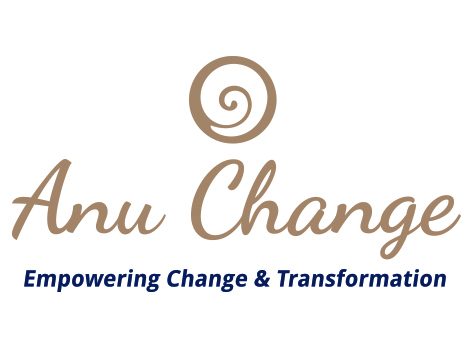
DISC Recruitment
Did you know?
Most people leave their jobs because of their manager NOT the company
Understand people in minutes instead of months by solving the people puzzle
Here’s how:
Using DISC personality profiling as part of the recruitment process is the first step to helping organizations get the keys to unlocking the people puzzle.
Interested to find out more?….. Read on
Una McGoey, Anu Change, Licensed Trainer for DISC Personality Profiling has for many years used the DISC personality profiling system as an integral part of her work. Una uses DISC extensively with individuals and organizations, helping them recruit the right people the first time, replicate top performers within a team and motivate to retain existing top performers.

DISC is based on four core personality groupings:
Dominant; Influencing; Steady and Compliant.
The D-style is mainly outgoing + task-orientated
The I-style is mainly outgoing + people-orientated
The S-style is mainly reserved + people-orientated
The C-style is mainly reserved + task-orientated
Each of us is unique. We may display a combination of one or more DISC styles and may behave differently at home at work or in a variety of social situations however, there are, generally speaking, core characteristics that remain consistent – especially when an individual is under pressure.
It is valuable to gain an understanding of the various styles because it helps us to understand what makes people ‘tick’. When we stop labeling characteristics as either ‘wrong’ or ‘right’ we begin to understand the world from others’ perspectives. The DISC philosophy is ‘wherever there is agreement there is power’.
Here’s a basic insight into each of the 4 styles
D-STYLE (DOMINANT)
D-styles are competitive. If they are in business, they are there to get results and have little trouble making decisions or keeping their eye on the long-term, strategic goal. They often like to be judged by results rather than methods. A D-style person has a fear of failure and tends to prefer challenging but achievable targets.
You can recognize a D-style easily because they are very direct communicators. They ‘tell it how it is, they like explanations to be brief and to the point, and do not always take into account others people’s feelings.
In a nutshell:
Driving passion: Winning
Greatest fear: Being taken advantage of
Prefers: Directing, telling
Phrases often used: Why not? Why don’t you? The point is… Trust me, When?
Under pressure: Finds comfort in taking action
The danger point: May push to get started and prefer to focus on detail later.
Route to action: ‘Ready – FIRE – Aim’
I-STYLE (INFLUENTIAL)
An I-style person thrives on public praise and recognition. I-styles are often creative and may have trouble settling on a single idea. They find it easy to start things, but much harder to see them through because they get distracted or can see many different ways to deliver the end result. Deadlines are a challenge because they can be over-optimistic about what can be achieved in the timeframe.
I-styles are easy to identify because they are friendly and outgoing. They like to be liked and will enthuse, chat, banter, tell stories and talk about…… themselves.
Driving passion: Recognition
Greatest fear: Loss of popularity
Prefers: Working with others, fun, and optimism
Phrases often used: No problem, It’ll all be ok, I know someone who
Under pressure: Talks and persuades
The danger point: Can be distracted by a new idea or project, lack of follow-through, over-optimism
Route to action: ‘Ready – Aim – TALK’
S-STYLE (STEADY)
S-styles like clarity of purpose. They prefer to complete one task at a time and like to see things through to completion. They are great listeners and team players. An S-style person needs time to adapt to change and seeks reassurance. They prefer routine, predictability, and security.
You will recognise an S-style person because their style of speech is reassuring, calm, and considered. They are concerned with other people’s feelings and their decisions may be based on the needs of others.
Driving passion: Harmony
Greatest fear: Loss of security and change for change’s sake
Prefers: Working cooperatively, listening
Phrases often used: How? How are you? We usually, We always
Under pressure: Finds comfort in working with a team, seeks the opinions of others
The danger point: May put the feelings or opinions of others ahead of their own better judgment.
Route to action: ‘Ready – aim – DELAY (because I’m not sure)
C-STYLE (COMPLIANT)
C-styles are often perfectionists, they value accuracy and are quality conscious. They like things to be done properly to a high standard. They may be slower to make decisions because they require (what they feel to be) adequate information before taking action.
A C-style person will want to analyse and understand before committing to a decision or giving an opinion. They will be concerned about what may have been overlooked and will focus on facts, details, and logic.
Driving passion: Perfection, quality, and high standards
Greatest fear: Getting it wrong, criticism without validation
Prefers: Working alone
Phrases often used: Why? What if? I will look into it, I have written it down, the facts are, research states that …
Under pressure: Can suffer from a paralysis of analysis through excess research.
The danger point is: May wait until everything is perfect before taking action.
Route to action: ‘Ready, aim; Ready, aim; Ready, aim, aim, aim, aim …’
Recruitment
DISC will help you gain an understanding of the candidate even before you meet them. This will help you devise your competency-based questions
Adapt your style to manage effectively
Once you have recruited it is important to help the new hire fit in. The reasons we ‘click or clash’ with others in our business life are often to do with our style of communication. The pressure points tend to occur when we try to communicate in a way that the other person wants to resist. For example, a D-style person may make decisions without listening to others’ feedback; an I-style person may dominate the conversation or talk about themselves too much; an S-style may be resistant to change; a C-style may present information using excessive detail.
Example of how DISC can be used within teams:
Focus on communicating with your team members in a way that reflects their personal preferences.
- Are they results-orientated?
Give them a target and reward them with status. Tell them: I know you will deliver.
- Are they friendly and outgoing?
They will be motivated by praise and appreciation. Say: I really appreciate all you have done to make this happen.
- Are they methodical?
Make sure there is a clear process in place for them to follow. Ask them: What support do you need?
- Are they detail-orientated?
Give them facts and figures to help them plan and complete their task. Ask them: Do the figures stack up?
Those who work together effectively, learn to understand each other. By understanding where potential tension points are it becomes possible to anticipate and manage situations and team dynamics more effectively. By helping everyone to appreciate and respect each other’s differences, you will build a team that delivers results.
With DISC you have the keys to unlock the people puzzle. It’s true that people are different – but as you understand DISC you will find that people are predictably different.
Want to learn more about the power of DISC Profiling?
Become DISC Certified with Una McGoey – Anu Change Academy
https://anuchange.com/disc-certification/
Anu Change, Oriel Hub, Finnabair Industrial Estate, Dundalk, Co Louth
m: (00353 876144566) e: una@anuchange.com w: www.anuchange.com



